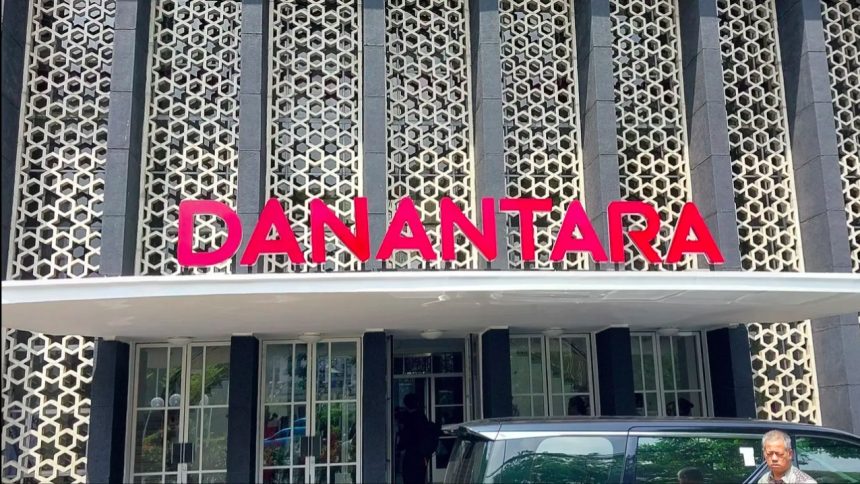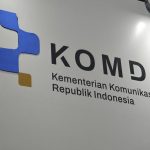Liga Asuransi – Dear readers, How are you? Welcome to our blog dedicated to risk management and insurance insights. Today, we delve into DANANTARA, Indonesia’s new economic entity, from a risk management perspective. This institution plays a pivotal role in optimizing state-owned assets to bolster economic growth, presenting unique risks and opportunities. If you find this analysis enlightening, please share it with your friends and explore the many other articles available on our blog. Your engagement helps us grow and continue providing valuable content. Thank you for reading and staying informed with us!
Danantara, officially known as Badan Pengelolaan Investasi Daya Anagata Nusantara, is a new sovereign wealth fund in Indonesia, it will be officially inaugurated on 24th February 2025. Established to optimize the management of state-owned assets, it operates outside of the regular State Budget (APBN) to streamline investments in strategic sectors like energy, technology, and infrastructure
Danantara’s strategy includes direct investments in (State Owned Enterprises SOEs) and partnerships with international investors to attract foreign capital and expertise, especially in areas like renewable energy and digital infrastructure
The fund is positioned as a significant player for global investors looking to engage in Indonesia’s economic landscape through public-private partnerships and other investment opportunities
Overall, Danantara represents a strategic initiative by the Indonesian government to strengthen its economic structure and ensure long-term prosperity by efficiently managing and maximizing the potential of state-owned assets
Danantara is similar to other global funds like Singapore’s Temasek in its operation under commercial principles aimed at generating long-term returns. Unlike some sovereign wealth funds that primarily stabilize government revenues or manage natural resource wealth, Danantara focuses on managing and optimizing state-owned assets to drive economic growth. With an initial asset base of $600 billion, Danantara is smaller than Norway’s Government Pension Fund Global, which manages over $1.8 trillion, but has a growth trajectory that could make it a major player in the global scene
Temasek Holdings is a global investment company headquartered in Singapore. It was established in 1974 to manage the investments of Singapore’s government in domestic and international markets. As a sovereign wealth fund, Temasek owns and manages a diverse portfolio that spans a broad spectrum of sectors including financial services, telecommunications, media, technology, transportation, industrials, life sciences, consumer products, real estate, and energy. With a multinational team and a network of global offices, Temasek seeks to deliver sustainable returns over the long term by adhering to principles of integrity and prudent investment management. As of recent reports, Temasek’s asset portfolio is substantial, showcasing a robust approach to growth through strategic investments both in mature economies and in emerging markets.
Khazanah Nasional Berhad, established in 1993, is the sovereign wealth fund of Malaysia, entrusted with growing the nation’s long-term wealth via strategic investments locally and internationally. As a key instrument of sovereign wealth, it holds and manages selected commercial assets of the Government of Malaysia, aiming to promote economic growth and make strategic investments on behalf of the nation. Khazanah invests in various sectors, including but not limited to healthcare, real estate, and infrastructure, to drive innovation, encourage sustainable practices, and enhance the country’s competitive edge. Its approach focuses on sound corporate governance and promoting strategic sectors critical to Malaysia’s industrial and economic advancement.
How does DANANTARA Work?
Danantara operates by consolidating and managing investments from Indonesia’s state-owned enterprises (SOEs). It focuses on optimizing these assets to generate sustainable revenue streams, aiming to drive strategic investments and economic growth. Danantara invests in high-growth sectors such as renewable energy, technology, and digital infrastructure, partnering with global investors to enhance capital efficiency. Its governance includes a supervisory board appointed by the president and an executive management team, ensuring adherence to international best practices and transparent operations.
Danantara can optimize investments and foster economic growth by managing a diversified portfolio of state-owned enterprise (SOE) assets efficiently and strategically. It leverages these assets to invest in high-potential sectors like renewable energy, technology, and infrastructure, aiming to generate high returns. By restructuring SOEs through mergers, acquisitions, and capital injections, Danantara aims to enhance its financial sustainability. Additionally, partnerships with international investors help to bring in foreign expertise and capital, further driving growth and maximizing investment returns.
The Risk Exposures
In financial risk management, risk exposures refer to the potential for financial losses due to various factors. Key types include market risk, involving losses from market fluctuations; credit risk, from counterparties failing to fulfill obligations; liquidity risk, impacting the ability to transact or convert assets into cash without significant loss; operational risk, from failed internal processes, people, or systems; and legal or regulatory risk, concerning changes in laws or regulations. Managing these risks involves identifying, analyzing, and implementing strategies to mitigate their potential impact on financial stability and performance.
Here are the key types of risk exposures in financial risk management:
- Market Risk: Potential losses due to fluctuations in market prices and rates.
- Credit Risk: Losses if a counterparty fails to meet financial obligations.
- Liquidity Risk: Difficulty in converting assets into cash without significant losses.
- Operational Risk: Failures in internal processes, personnel, or systems that lead to losses.
- Legal/Regulatory Risk: Risks arising from changes in laws or regulations that affect financial operations.
- Strategic Risk: Risks associated with adverse business decisions or improper implementation of decisions.
- Reputational Risk: Damage to an organization’s reputation can affect its profitability or existence.
- Political Risks
Market Risk:
Market risk, a fundamental concern in financial risk management, arises from fluctuations in the prices of securities, interest rates, foreign exchange rates, and commodity prices. This type of risk impacts investments and trading in these markets, subjecting portfolios to potential losses or gains depending on market movements. Market risk can be categorized into several types:
- Equity Risk: Changes in stock prices and indices.
- Interest Rate Risk: Fluctuations in interest rates affecting bonds and other interest-bearing assets.
- Currency Risk: Variability in foreign exchange rates that can affect the value of overseas investments.
- Commodity Risk: Price changes in commodities like oil, metals, and agricultural products.
Investors and financial institutions manage market risk using various tools and strategies, such as asset diversification, hedging techniques, and derivatives like options and futures. Effective management of market risk is crucial for stabilizing returns and achieving long-term financial objectives in the face of market volatility.
Credit Risk:
Credit risk refers to the potential for financial losses when a counterparty fails to fulfill their financial obligations according to agreed terms. This risk is a major concern for banks, financial institutions, and any entity that extends credit or enters into contracts that involve financial transactions. Credit risk can arise from various sources, including loans, credit lines, bonds, or derivative contracts. It’s assessed based on the counterparty’s ability to pay, which is influenced by their financial health, market conditions, and economic factors.
To manage credit risk, financial entities employ risk assessment models to evaluate the creditworthiness of clients or counterparties. They also use diversification strategies, credit derivatives, and secure collaterals to mitigate potential losses. Monitoring and adjusting credit exposure to different sectors or entities is an ongoing process that helps institutions navigate through changes in economic conditions and maintain financial stability.
Liquidity Risk:
Liquidity risk involves the challenge of converting assets into cash quickly without incurring substantial losses. This risk becomes particularly prominent in markets where trading volumes are low or assets are inherently illiquid, such as in certain real estate markets or with specialized financial instruments. Financial entities and investors face liquidity risk when they cannot efficiently sell these assets at market value, potentially leading to financial strain or inability to meet short-term obligations. Effective management of liquidity risk often involves maintaining adequate cash reserves, arranging lines of credit, or holding assets that can be quickly and easily liquidated.
Operational Risk:
Operational risk refers to losses from inadequate or failed internal processes, personnel, or systems. This risk category encompasses a wide range of issues, including technical failures, human error, fraud, and any disruption that impacts business operations. It is inherent in all business activities and can manifest in various ways, from minor interruptions to significant crises that threaten a company’s survival. To manage operational risk, organizations implement robust internal controls, continuously train employees, regularly update processes and systems, and develop effective disaster recovery plans. These measures help minimize potential losses and ensure operational continuity.
Legal/Regulatory Risk:
Legal and regulatory risk pertains to the potential for losses due to changes in laws or regulations that directly impact financial operations. This type of risk can influence investment decisions, operational processes, and compliance standards across industries. Companies must navigate complex regulatory environments that can vary by jurisdiction, which requires robust compliance mechanisms and ongoing monitoring of legal shifts. Managing this risk involves staying updated on relevant legislation, engaging with legal counsel, and integrating regulatory changes into business practices promptly to avoid penalties and legal disputes, thereby safeguarding the company’s reputation and financial health.
Strategic Risk:
Strategic risk involves the potential negative consequences that organizations face when their business strategies do not perform as expected or when decisions made at the managerial or executive levels lead to adverse outcomes. This type of risk can stem from poor business decisions, inadequate execution of strategies, failure to adapt to market changes, or mismanagement of resources. Effective management of strategic risk requires companies to continuously assess their strategic objectives against the market and competitive landscape. Organizations must be agile, adapting strategies based on ongoing feedback and changes in the external environment. Risk management practices should include scenario planning, regular strategic reviews, and ensuring alignment between strategy and the company’s risk appetite. Additionally, fostering a culture that encourages communication, and continuous improvement can mitigate strategic risks by allowing for timely adjustments and decision-making processes that are responsive to external and internal pressures.
Reputational Risk:
Reputational risk refers to the potential loss that a company may face if its reputation is damaged, which can significantly impact its profitability or even its continued existence. This type of risk can arise from various sources, including poor customer service, compliance failures, unethical behavior, and substandard products. The effects can be severe, leading to lost revenue, litigation costs, and a decline in stock price. Companies manage reputational risk by maintaining high ethical standards, implementing robust compliance programs, and engaging in effective public relations. Businesses must monitor and address any issues that could harm their reputation proactively to sustain their market position and ensure long-term success.
Political risks
Political risk involves the uncertainty and potential financial losses businesses may encounter due to political changes or instability in a country. This can include changes in government, legislative alterations, political unrest, or geopolitical conflicts that may affect the business environment and operations. Political risk is particularly pertinent for companies operating internationally in multiple jurisdictions, where varying political climates can affect markets differently. Managing political risk requires a thorough understanding of the local political landscape, continuous monitoring of political developments, and strategies to mitigate potential negative impacts, such as diversifying investments and securing appropriate insurance coverage.
Type of Insurance needs for DANANTARA
For an entity like DANANTARA, various insurance coverages could be crucial to mitigate diverse risks associated with its operations:
- Directors and Officers (D&O) Liability Insurance: Protects the executives making decisions on DANANTARA’s behalf.
- Professional Indemnity Insurance: Covers risks related to errors and omissions in investment decisions and management.
- Property and Asset Insurance: Ensures protection against physical damage or loss of assets managed.
- Cyber Liability Insurance: Protects against risks associated with digital operations, data breaches, or cyber-attacks.
- Political Risk Insurance: Guards against losses due to political instability or changes in government policy affecting investments.
- Fidelity Insurance: Covers losses due to fraudulent acts or dishonesty by employees. These coverages help safeguard the fund’s financial stability and operational continuity against potential threats.
Conclusion
DANANTARA, Indonesia’s innovative sovereign wealth fund, presents a mix of opportunities and challenges. As a strategic tool for optimizing state-owned assets, it offers a platform to drive economic growth and attract foreign investment. However, the fund faces challenges in maintaining transparency and adhering to international best practices in a complex regulatory environment. The risks associated with market volatility and political changes also demand robust risk management strategies. Successfully navigating these elements can solidify DANANTARA’s role in enhancing Indonesia’s economic landscape and ensuring long-term prosperity.
The information provided in this article is for general informational purposes only. While we strive to keep the data accurate and up-to-date, we make no representations or warranties of any kind, express or implied, about the completeness, accuracy, reliability, suitability, or availability concerning the website or the information, products, services, or related graphics contained in the article for any purpose. Any reliance you place on such information is therefore strictly at your own risk.
Looking for insurance products? Don’t waste your time and contact us now
HOTLINE L&G 24 JAM: 0811-8507-773 (CALL – WHATSAPP – SMS)
Website: lngrisk.co.id
Email: oktoyar.meli@lngrisk.co.id
—















